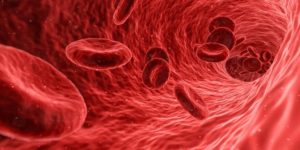Before giving a transfusion to a person, it is necessary to determine the blood type of the recipient’s blood and the blood type of the donor blood so that the bloods can be appropriately matched.
This process is called blood typing and blood matching, and these procedures are performed in what way?


Blood typing is a process by which the blood group of an individual is determined.
Procedure:
A sample of the patient’s blood is obtained and placed in 3 rows on a clean white tile. In each row, a drop of each sera sample (anti-A, anti-B and anti-D) will be dropped and reactions will be observed.
Results:
a) Agglutination with Anti-A serum sample signifies blood group A and presence of Anti-B antibodies in the blood.
b) Agglutination with Anti-B serum sample signifies blood group B and the presence of Anti-A antibodies in the blood.
c) Agglutination with both Anti-A and Anti-B sera sample signifies blood group AB and the absence of both Anti-A and Anti-B antibodies in the blood.
d) Agglutination with neither Anti-A nor Anti-B sera sample signifies blood group O and the presence of both Anti-A and Anti-B antibodies in the blood.
e) Agglutination with Anti-D serum sample signifies the presence of the Rh protein i.e. Rh+ in the blood.
Cross-matching is the process by which the compatibility of a donor’s antigen and a recipient’s antibody is tested.
Procedure: A portion of the donor’s and the recipient’s blood is mixed and observed for reactions.
Result: The occurrence of agglutination indicates incompatibility and vice-versa 🥴🙂
Wow, this is an excellent quote of the steps!
A wonderful Response!
Thank you very much for attempting today’s review question
Warm regards
It is important to note that the basis of this procedure(blood grouping) is Agglutination, the steps are:
1.The blood is mixed with saline (0.9) to form suspension
2.there are Antisera containing different agglutinins
3.if the blood(suspension) is mixed with Antiserum A and there is agglutination, it means the RBC has Antibody A thus is blood type A
4.if the blood is mixed with Antiserum B and there is agglutination,it means the RBC has Antigen B thus is blood type B
5.if the blood forms agglutination with both antisera A and B,it means the the RBC has both Antigen A and B thus it is blood type AB
6.if the blood does not form agglutination with both Antisera A and B ,it means it has neither Antigen A nor B thus it is blood type O
To perform blood typing and crossmatching, your doctor will collect a sample of your blood to send to a laboratory for testing.A trained healthcare practitioner can draw a sample of your blood at your doctor’s office, blood bank, or other sites. They’ll use a needle to draw the sample from one of your veins, usually on the inside of your elbow.
They’ll likely start by disinfecting the area with an antiseptic. An elastic band will be placed around the upper part of your arm, causing your vein to swell up with blood. A needle that they gently inserted into your vein will collect a sample of your blood in a tube.
Once they’ve collected enough blood, the practitioner will remove the needle and unwrap the band from your arm. The puncture site will be cleaned and, if needed, bandaged. Your blood sample will then be labeled and sent to a laboratory for testing.In the laboratory, a technician can conduct several tests to type your blood.They will mix some of your blood with commercially prepared anti-A and anti-B antibodies. If your blood cells agglutinate, or clump together, it means your sample has reacted with one of the antibodies. This is called forward typing.
Next, the technician will perform reverse typing. This calls for some of your serum to be mixed with type A and type B cells. Your sample with then be checked for signs of reaction.
Following that, the technician will perform Rh typing. This is when they mix some of your blood with antibodies against Rh factor. Signs of any reaction will be noted.
To crossmatch your blood against donor blood or organs, the technician will mix a sample of your blood with a sample of the donor material. Again, they’ll check for signs of reaction.Depending on the results of your blood typing, your blood will be classified as type A, B, AB, or O. It will also be classified as Rh+ or Rh-. There is no “normal” or “abnormal” blood type.
The results of your crossmatching test will help your doctor assess if it’s safe for you to receive specific donor blood or organs.
Wow this is a wonderful Response to the question!
An excellent one!
Thank you for attempting today’s review question.
Warm regards
To Carry Out The Blood Transfusion Process, We have what we call Antibodies and Antigens. We have four major blood types which are A, B, AB, O.
O is universal donor, meaning they can donate to any blood type.
AB is universal recipent, meaning they can receive from any blood type.
The antibody A has an antigen B
Antibody B has antigen A
Antibody AB has antigen A, B, O
Antibody O has antigen A, B, AB
Now, if two the same antibody or same antigen meets it causes blood clot which might leads to death of the recipent. So during blood transfusion, for example, a recipent with antibody A (antigen B)will receive blood from donor with antibody B(antigen A).. and so on.
Hope it goes a way.